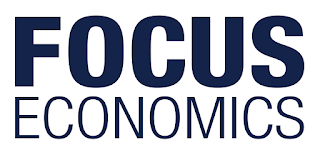Soccer Analytics: England Premier League Timing W/ 13 Games Played @chaganomics Soccer Analytics: Italy Serie A 14 Games Playe...
Soccer Analytics: Italy Serie A and England Premier League
Roaring ahead to a seven year high...The economy steamed ahead in Q3, according to preliminary data released by the Bank of Ko...
Economic Outlook: Korea
We are retro-fitting and editing sporting charts for Chaganomics. Stay tuned!
1920 - 2000: MLB American League Batting - @chaganomics
Mainland China Outlook: The economy continues to defy signs of an abrupt slowdown on the back of resilient household consumpti...
Global Outlook: China December 2017
Article Reposted From Nov. 2nd, 2017- Bitcoin has finally found its proper listing place: The futures market. Most investors and consu...
Has Bitcoin Found Footing?
South Africa's economy exited technical recession in Q2 and recent data provides reason for cautious optimism. The recent recovery ...
South Africa: Economy at a tipping point?
South Africa's economy exited technical recession in Q2 and recent data provides reason for cautious optimism. The recent recovery in agricultural output carried into in Q3, and consumer confidence is increasing on the back of moderating inflation and higher real wage growth. Adding to the good news, manufacturing output expanded in August for the first time this year. That said, this positive data, should be taken with caution. Endless political bickering constitutes is a real issue. It is the biggest stumbling block to faster GDP growth, and it continues to weigh on business confidence and stave off future investment. In September, the manufacturing PMI dipped further into contractionary territory, and business sentiment remained abysmally low despite improving from the over 30-year low recorded in August. Furthermore, political noise is set to remain elevated in the foreseeable future as the country gears up for the ANC Conference in December, when a new presidential candidate for next year’s election will be chosen. Focus Economics
Bitcoin has finally found its proper listing place: The futures market. Most investors and consumers will never touch a futures contrac...
Bitcoin Is Now A Futures Product Like Coffee And Chocolate
Bitcoin has finally found its proper listing place: The futures market. Most investors and consumers will never touch a futures contract or a derivative. A derivative is a financial instrument and the most common form of a derivative is a futures contract. They get very complex at times, but for the most part many are just board listed futures contracts like pork bellies and bushels of corn and bars of aluminum (see more on futures and how they work at Investopedia).
In response to this — and heavy lobbying efforts and financial sponsorship — CME has launched a product called the BRR — Bitcoin Reference Rate. This doesn’t make it more readily available or mainstream, but it does solidify the fact that it exists and there is financial interest surrounding it. Bitcoin is no longer a fleeting and useless fad. For the CME — Chicago Mercantile Exchange to list a bitcoin product the investing public has the necessary volume and interest to trade CME CF Bitcoin Reference Rate (BRR) and CME CF Bitcoin Real Time Index (BRTI) — both are “a standardized reference rate and spot price index with independent oversight are accelerating the professionalization of bitcoin trading and further establishing digital assets as a new asset class” — BRR and BRTI launched November 14, 2016 globally, and the products will launch on the CME by the end of the year.
Dupont (from the American family) said it best in 1768: there must be a necessary relation between the value of foodstuffs [sic] in the price of a working day, which must secure to the worker the means necessary to satisfy his needs. Oddly enough this is happening in bitcoin. You can see common themes in the charts below. While the “mining” costs rise — essentially computer power and electricity, the hash rates are spiking, miner revenue is spiking. Those mining see this as a simple way to coordinate production and profits and speculators are rushing in. Jamie Dimon of JP Morgan may have been mistaken when he said only criminals and drug dealers use the currency. There is natural curiosity in money and wealth and the internet has given the entire world the ability to be a free merchant, speculator and gambler.

















